I'd love to read a joint interview of Judy Faulker and Neil Pappalardo where they talk about those three days…
Curbside Consult with Dr. Jayne 1/2/12
What Gets Measured Gets Managed
During the last five years, we have seen significant shifts in how healthcare is delivered and in the way in which different healthcare services are valued. Most of us have realized for quite some time that fee-for-service medicine is clinging to life. Pay-for-outcomes is going to be the order of things from here on out.
Hospitals are no longer going to be paid to ameliorate hospital-acquired conditions or to deliver care to patients who were impacted by preventable harms. Physicians are going to be judged on their patients’ lab data and biometric information rather than the number of visits they bill.
Care will be transformed regardless of how we feel about it, whether it’s by the name Accountable Care, Shared Savings, or Pay-for-Performance. It’s something we all need to get used to.
My colleagues were ringing in the New Year this morning in the time-honored tradition of complaining around the coffee pot. (Most of us were rounding a bit later than usual and I did see a couple of bloodshot eyes.) It seems that many independent physicians, particularly those in small practices, don’t know where to start. (Employed docs are generally confused too, although to a slightly lesser degree.)
I decided to introduce them to Peter Drucker, whose famous statement, “What gets measured gets managed,” should be well understood by now. But let’s just say I was more than surprised by the blank looks in front of me.
Several of the docs didn’t understand that Meaningful Use is going to get trickier as time goes on. Although there are some metrics for Stage 1, many of them are easily achievable with a minimum of work. (Apparently though not as easy as people might think – I’m still stumped by the phenomenon of people unsuccessfully attesting. If you don’t have the numbers, why would you attest? Still waiting for someone to shed light on this.)
Although we don’t have final metrics for Stage 2 and beyond, it’s virtually guaranteed that the bar will be higher and the hoops smaller. In talking with the docs in the lounge, though, many of them don’t have a clue how to approach care metrics – even those with sophisticated software. I’m seeing far too many physicians who are barely using their certified EHRs, who are confused by some of the terminology, or who are hung up on wanting flash and sizzle.
I felt like I was giving a Grand Rounds presentation because our friendly chatter turned into a lecture that I probably could have given CME credit for. Docs don’t seem to understand that you have to know what you’re looking at in order to drive change. It’s not going to drive itself. You have to figure out what you want to work on, then measure it, then work on it, then measure it and work on it some more. Lather, rinse, repeat.
It seems pretty straightforward, but maybe it’s not, so allow me to share some other “secrets” that your docs may not know.
First, don’t get hung up on the fact that your EHR vendor may or may not have a registry or dashboards. Maybe they do and it’s just called something else, or maybe they don’t. One doc I was chatting with was caught up in the fact that he didn’t have his vendor’s dashboard product live yet. He was either under the impression (or in denial – it’s debatable) that he couldn’t start managing care until he had the pretty charts to back up the data. He didn’t like it too much when I called baloney on that one.
Most certified EHRs have at least some minimally decent ability to do reporting. That’s really all you need to start. If you have discrete data, you can report on a wealth of conditions. Prostate cancer screening? Check. Blood pressures? Check. Documentation of advance directives? Check.
You don’t need pie charts to tell you how to care for patients. When your report has blanks on it because you haven’t documented an item for a particular patient – that, my friends, is an opportunity for care.
Second, don’t get baffled by the metrics. Looking at some of the NCQA or NQF or MU measures and how they’re calculated makes my head spin as much as yours does. If you’ve never tried to do quality improvement before, start with something basic.
If it’s important to you to make sure every patient over 50 has a documented cholesterol test, start there. Don’t get hung up in the numbers and managing everyone down to an LDL of 70 or figuring out complicated exclusions. Start with something manageable, such as actually testing everyone. Run reports, do outreach, give it a month or two, then run those reports again and see if you’re making a change.
Third (and this is one of those points where I’m glad I’m anonymous – my CIO is probably spitting his coffee as he reads this) you don’t even have to have an EHR to make a difference. (I think I heard a few vendor gasps out there, perhaps the hissing of the word “heresy,” but it’s true.) You can make tangible gains in patient care without even a single chart pull. If you have a practice management system (that’s a “billing system” to some of you docs) with even rudimentary reporting capabilities, you can find opportunities to deliver care.
How so, you ask? Take an all-too-common diagnosis like diabetes (250.xx in ICD-9 terms.) Run some claims reports. Run a report of patients seen in the last three years with that group of diagnoses codes on a claim (or pick a single one like 250.00 if you’re scared at what you might find) and the date of their last billable visit. Presto! Anyone who hasn’t been seen in the last six months is an opportunity for care. This, of course, assumes that you actually bill the codes you’re addressing at the visit and not just cloning the last visit’s codes, which may or may not have included the diabetes. Primary care physicians are notorious for under-documenting the work they do.
Calculate the percentage of diabetics who haven’t been seen in the last six months and you just created your first metric. (If you passed epidemiology and biostatistics, which you must have to have graduated, you can calculate this. Trust me.) Send some postcards and make some calls (HIPAA-appropriate of course) and get those patients to come to your office for an actual billable visit. Report again in two to three months and see how you did. If you need a graph to show you the results, allow me to introduce you to my friend, Microsoft Excel. But I’m betting the numbers will speak for themselves.
Finally, it’s not just enough to have the data. You have to make it visible to make it actionable. Post your goals and action plans in a visible place in the office. Post monthly outcomes numbers. Celebrate those victories. When the numbers aren’t in your favor, take some time to figure out why and how you can do things differently. Involve everyone in the office. Even if you’re only focusing on a single metric each month, you WILL make a difference in the lives of your patients.
If you don’t believe that what gets measured gets managed (especially if you’re posting it publicly for everyone and their cousins to see) think again. I used to think I was pretty decent with my exercise habits (although it truly is difficult to hit the treadmill with a martini, so I wouldn’t recommend it.) In 2010, I did about 870 miles, which wasn’t totally shabby.
However, a double-dog-dare by some of my staff led to the public posting of our activities, with technical validation courtesy of our friends Garmin and Nike+ to prohibit cheating. (I suppose I could have paid the neighbor kid to jog around with my Garmin on, but that wouldn’t have been very sporting.) We have some serious running junkies on our team, and although I wasn’t delusional about keeping up with them, I felt pretty strongly about being able to beat most of the 20-somethings that populate the cube farm we call home. (Yes, they’re young. Yes, many of them are liberal arts grads. No, we’re not an Epic shop.)
Everyone had to share his or her numbers Saturday night. I almost forgot, so I was frantically uploading with a glass of Bailey’s in hand. I finished respectably with over 1,200 miles, but there’s always 2012:
Just Measure It. Just Manage It. Just Do It.







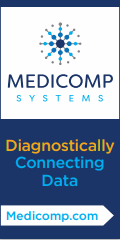


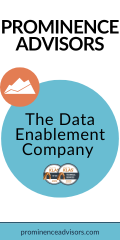







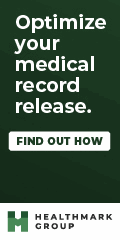

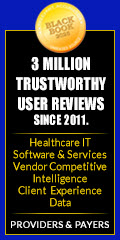









































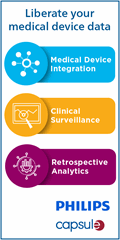























Great post. Glad to see someone willing to make the comment about using the PM solution to drive value without buying another tool.
In a prior life deploying emr’s it was amazing how when posting the simplest of data regarding ED wait times tied to doctors on the wall changed physician behavior. These guys were competitirs who loved the data once they “trusted” it. Unfortunately when it got to administrator changes regarding admission processes, hospitalists and discharge administrators did not have the stamina to address outcomes and behaviors. Politics. I believe they will have to in 2012 and beyond.
I couldn’t agree more. We’re asking people to run before they’ve even learned how to walk…the data available in even the most basic PMs is astonishing and unused. In fact, I trust the data in most PMs *more* than a lot of the EHR data I see.
The simplistic MBO notion of “What gets measured gets managed” seems appealing to novice leaders, but has misled more people and organizations than almost any other management concept ever conceived.
The fundamental flaws with managing by the numbers are the underlying assumptions that: 1) the things selected for measurement are each valuable by themselves, 2) the set of things selected for measurement are somehow representative what needs to be achieved (and thus achievement of the numbers is all that matters even if the end result makes no sense), 3) we know what the “right” values are for each, and 4) that a complex system can be reduced to a few numbers. I’ve seen more organizations driven in the wrong direction by attempts to reach their “numbers” than almost any other force.
A much deeper thinker than Drucker observed that “Not everything that counts can be measured. Not everything that can be measured counts.” (Einstein)
Drucker’s MBO is a concept from the 1950’s that might be appealing to new managers, but good leaders have moved way beyond it. If healthcare has not, it’s still stuck in the 50’s (or earlier).
There’s always a naysayer in the crowd (No MBO please) just to please Hegel, I think, but c’mon. You’re equating mismanagement with mismeasurement, and they are not the same.
I’ve seen more organizations driven in the wrong direction by managers basing their decisions on “instinct” and “feelings.” Doctors are the most unscientific managers I’ve ever seen and they often assume that they are better at providing care than they really are. Ask most primary care providers how good they are at delivering their fundamental services (annual exams, immunizations, etc.). They will grossly overestimate their success, in my considerable experience.
Meanwhile, Jane isn’t advocating for bizarre new measurements that don’t reflect reality. She’s talking about the low hanging fruit. She’s not talking about “managing by numbers” she’s talking about *actually using some numbers sometimes*.
Making Einstein a management expert reference, meanwhile, is just odd. He wasn’t talking about management or organizations, you’ve taken his quote out of context. Here, I’ll quote Picasso with just one word change and you can use that next time, too: “Numbers are a lie that makes us realize truth.” Picasso was just as deep a thinker as Einstein, I am sure.
No MBO please has a good point overall, but the deep thinking quote probably isn’t Einstein (http://quoteinvestigator.com/2010/05/26/everything-counts-einstein/). I don’t think a non-native-English speaker would come up with a phraseology like that.
Thank you …. thank you …. thank you for these three sentences. This has been driving me nuts.
“I’m still stumped by the phenomenon of people unsuccessfully attesting. If you don’t have the numbers, why would you attest? Still waiting for someone to shed light on this.”
If you do find out, please post it here.
It ought to be easier than it is. The EMR Meaningful Use reports are limited at best. GE already announced publically that at least two of their MU reports don’t work right, and other vendors may have the same problem. The ambulatory EMR reports I’ve seen are clunky and mystical. It’s very difficult to get behind them to figure out exactly whcih fields are being queried. Some reports don’t match a reasonable workflow. For example, one I’ve seen only reports on patient reminders that are sent via email. In a practice where less than 30% of patients report email addresses, this is hardly useful. The practices are needing to hire consultants to come in and analyze the MU reports in order to figure out how they work. Or, they are using other reporting methods to measure their actual performance. On others I’ve seen 2 reports that should represent exactly the same denominator, showing 2 different denominators. So, part of the difficulty is meeting the standard, yes, but also finding a way of measuring it correctly.